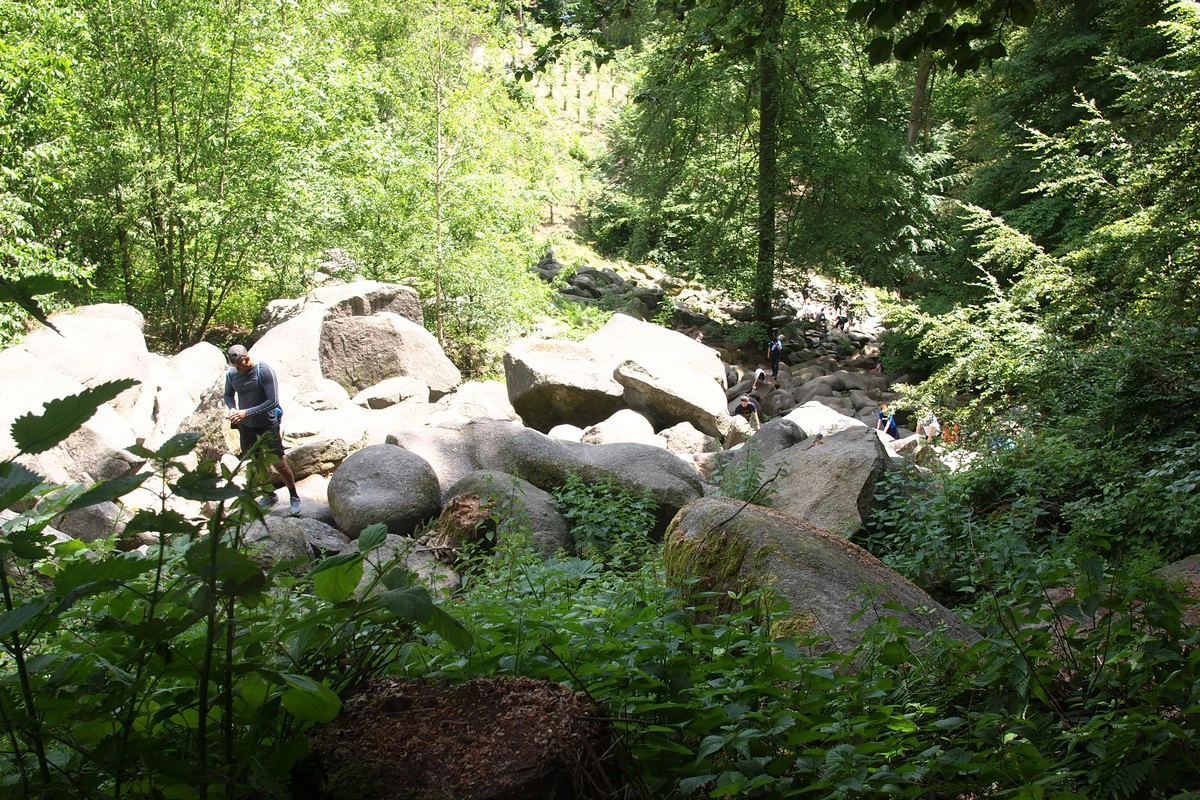Last Updated on 01/04/2025
Odenwald is a forested and mountainous region between Frankfurt, Heidelberg and Heilbronn. The mountains are quite high in places. Every time we passed through Odenwald, it was a trip without confidence that we would get where we needed to go on time. The road stretched into infinity and led to completely unexpected places. In my opinion, ghosts from neighboring Spessart have long since moved to this enchanted place, namely to the village of Mudau, which, after two hits, we decided to avoid by any means.
Maps nearby:
“Mountain road” Bergstrasse. From Darmstadt to Heidelberg
North: Spessart. Mespelbrunn castle
East: Romantic Franconia
From Ulm to Ellwangen. Albtrauf and Bavarian Swabia
North-West: Attractions around Frankfurt am Main, along the Rhine to Koblenz
Castles on the Middle Rhine on the map. 1. From Rüdesheim to Bacharach
South: Castle Road (Burgenstrasse). 1. Neckar cycle route Mannheim – Eberbach
Castle Road. 2. Neckar valley cycle route. From Zwingenberg to Bad Wimpfen
Castle Road. 3. From Sinsheim to Rothenburg ob der Tauber
90+ parks and gardens in Germany on the map
If you decide to take a shortcut through Odenwald, keep in mind that the autobahn is in most cases faster. The exception is a multi-hour traffic jam due to an accident. Most roads are laid from north to south. It is much more difficult to move across.
The geological uniqueness of the region allowed it to be included in the UNESCO list. Educational trails are laid out in special places.
Now the question is: why should you go there at all? If you live somewhere nearby and are choosing a destination for a day trip, or are driving past and wondering where to make a useful stop, there are some interesting/very interesting places around the edges of the region.
The top attractions are located on the southern edge of the Odenwald – Heidelberg and the Neckar Valley, which can be visited using any transport and is especially great by bicycle.
Table of Contents
- Odenwald sightseeing video
- Odenwald map of attractions
- Tauber Valley. Cycle route Tauberbischofheim – Wertheim
- 1. Bad Mergentheim
- 2. Stalactite cave near Eberstadt (Eberstadter Tropfsteinhöhle)
- 3. Walldürn
- 4. Amorbach
- 5. Michelstadt and Erbach
- 6-7. Bergstrasse
- 8. Weinheim
- 9. Fürth
- 10. Wald-Michelbach
- 11. Speyer
- 12. Schwetzingen
- 13. Heidelberg
- 14. Ladenburg and Schriesheim
- 15, 16. Neckar valley and Castle road
- 17. Sinsheim and Schwarzach zoo
- 18. Jagst and Kocher route
Odenwald sightseeing video
Video version (written, however, more details).
Odenwald map of attractions
The tourist towns along the eastern edge of the Odenwald are united into the Bergstrasse tourist route.
The first stage of the Romantic Road (blue line) runs along the western edge.
The Castle Road (red line) runs along the southern edge.
If you don’t see the map, please enable advertising and cookies.
Tauber Valley. Cycle route Tauberbischofheim – Wertheim
The route goes through the very winding and narrow “beloved valley of the Tauber river” (Liebliches Taubertal). It is very suitable for hot days, as the road is on the shady side, always on the left bank. By car this route is not very pleasant – too winding, but by bike it is just right.
Sights:
Tauberbischofsheim – a small old town
Wertheim – an old town with a castle (see the topic on Spessart)
between them along the Tauber valley there is the monastery Bronnbach (Link) and the castle Gamburg (Link)
old bridges over the Tauber, with sculptures
The Tauber Valley is famous for its apple orchards. Along the route you can see terraced orchards.
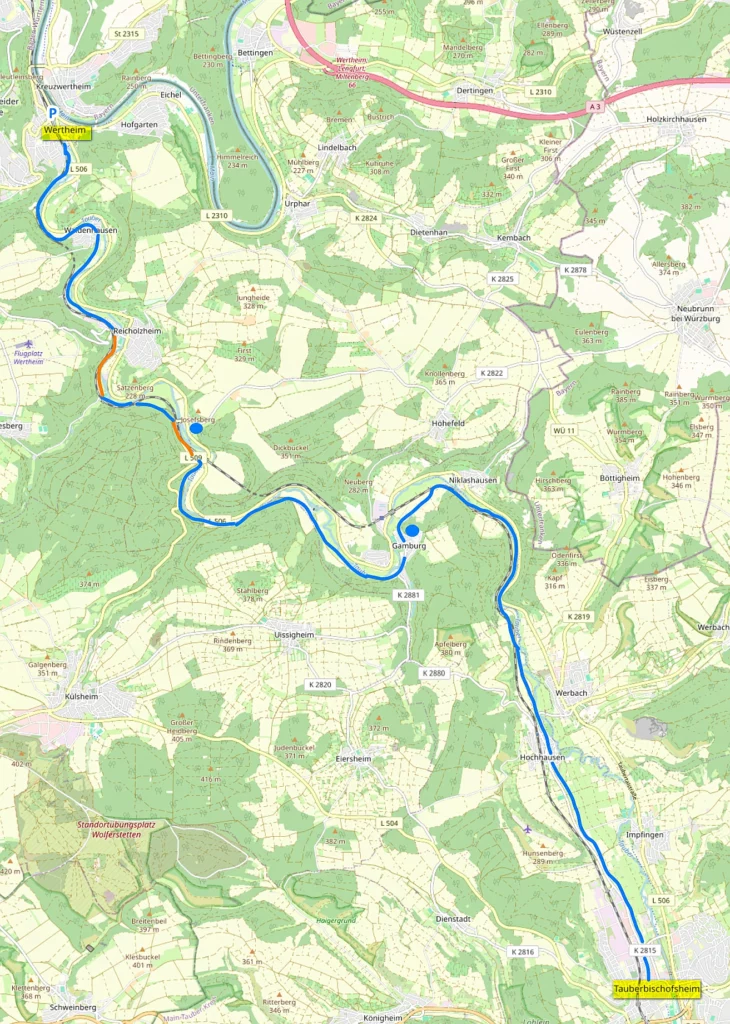
Tauberbischofheim


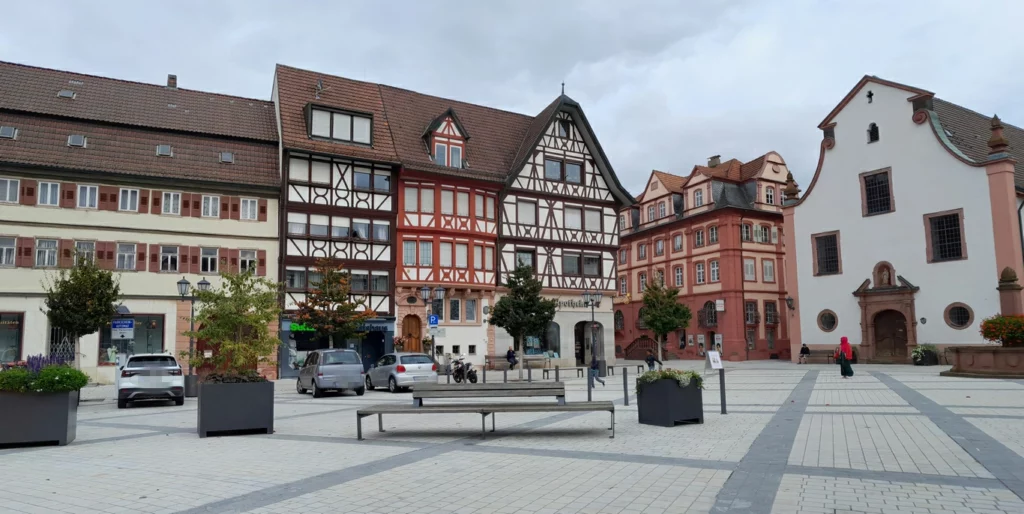
Gamburg


Bronnbach Monastery. The Cistercian monastery is quite old, but little has been preserved inside. The most interesting things are the church itself (12th-13th centuries, late Romanesque, but the interior is Baroque) and the cloister, which can only be viewed by paying for entry to the monastery. The rooms include a banquet hall, a ceremonial hall, a library and three empty rooms without interiors, but with unusual stucco on the ceiling. For the first time I saw stucco in which the legs of a deer or a dog stick out from the ceiling.


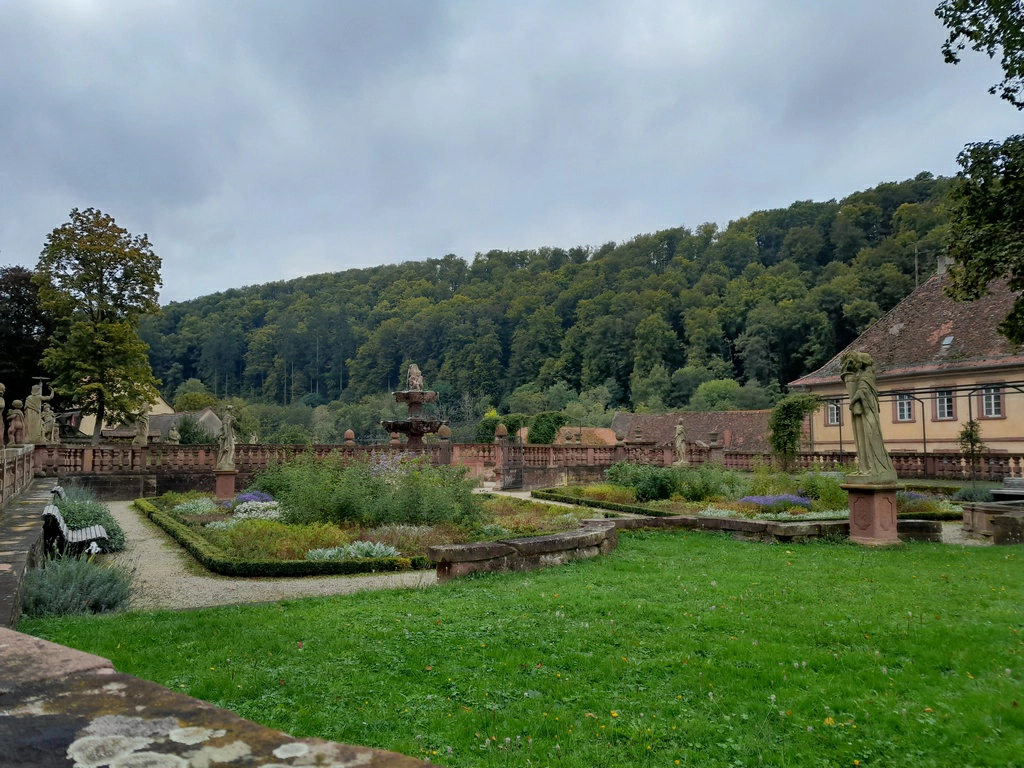
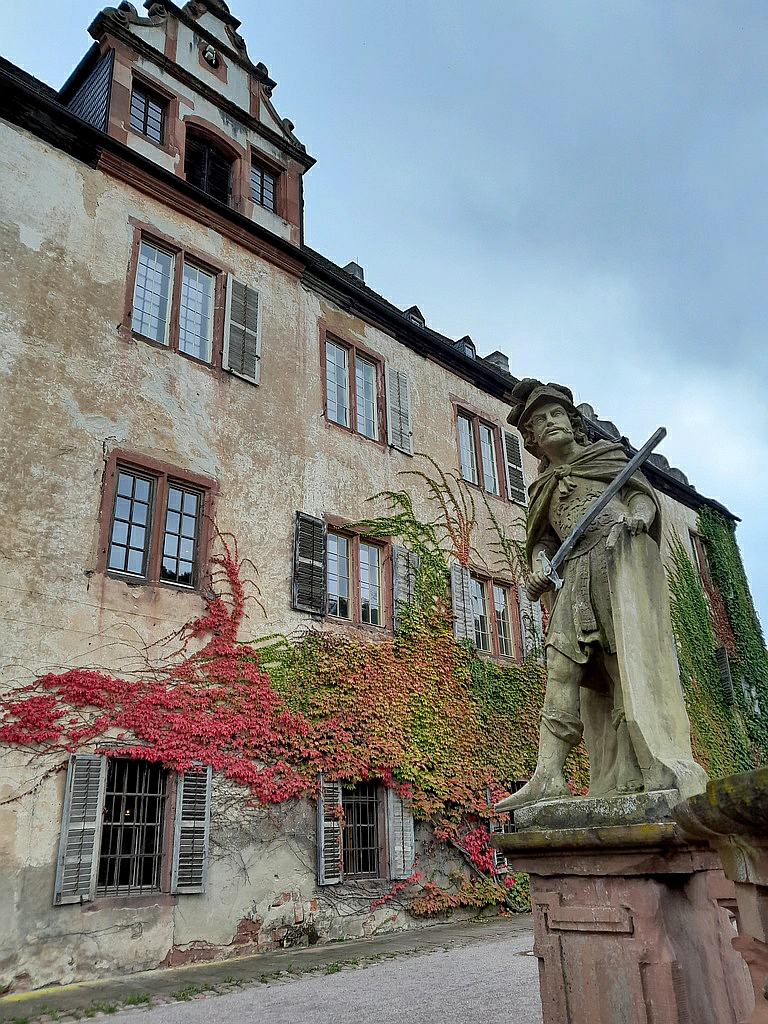
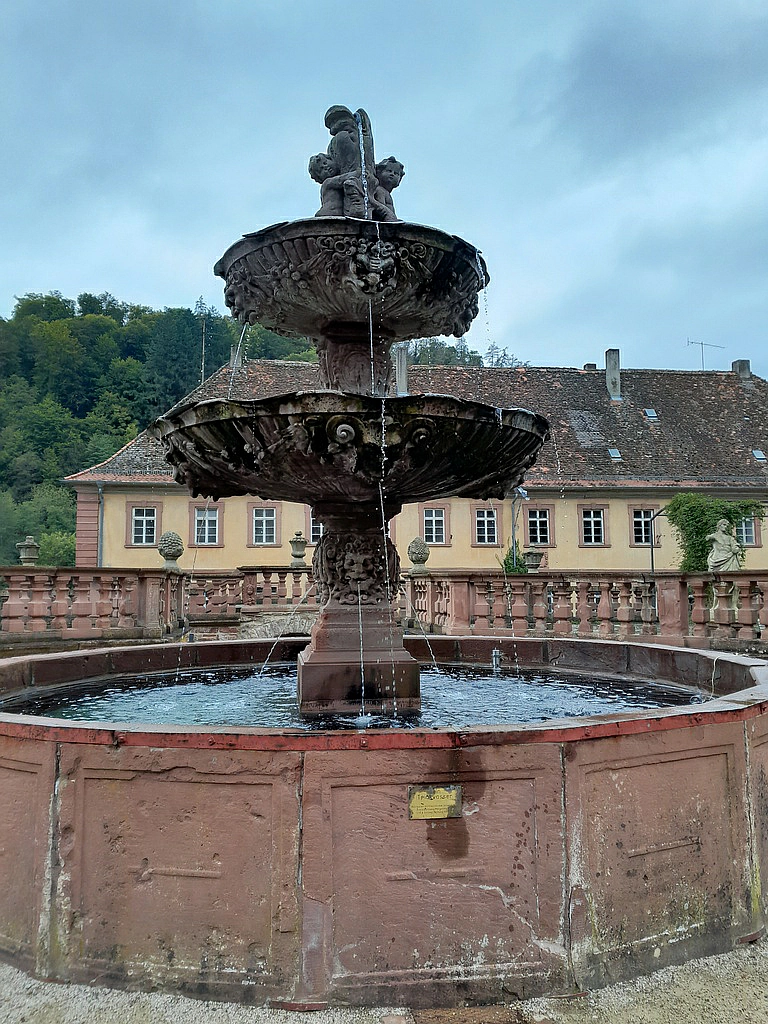
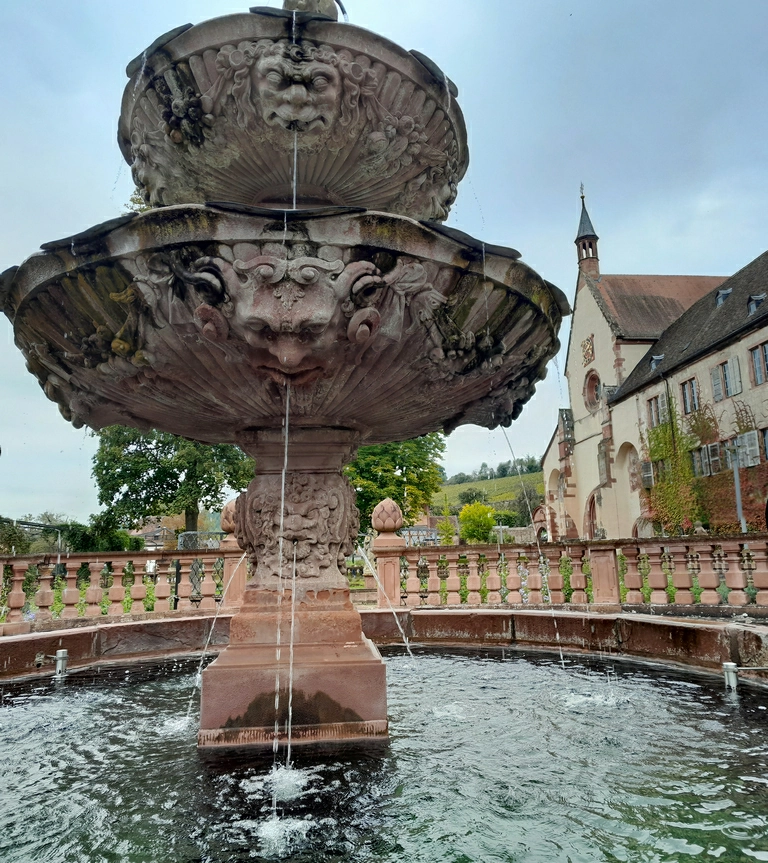


1. Bad Mergentheim
The city is known as the last (16th – early 19th century) residence of the German (Teutonic) Order. The transfer of the residence to Bad Mergenheim was the result of the order’s loss of territory and influence.
The Romantic Road and the Favorite Taubertal Valley routes pass through Bad Mergentheim.
The town itself is quite average, the historical center is small. The main attraction is the museum in the palace of the German Order and the spa park.
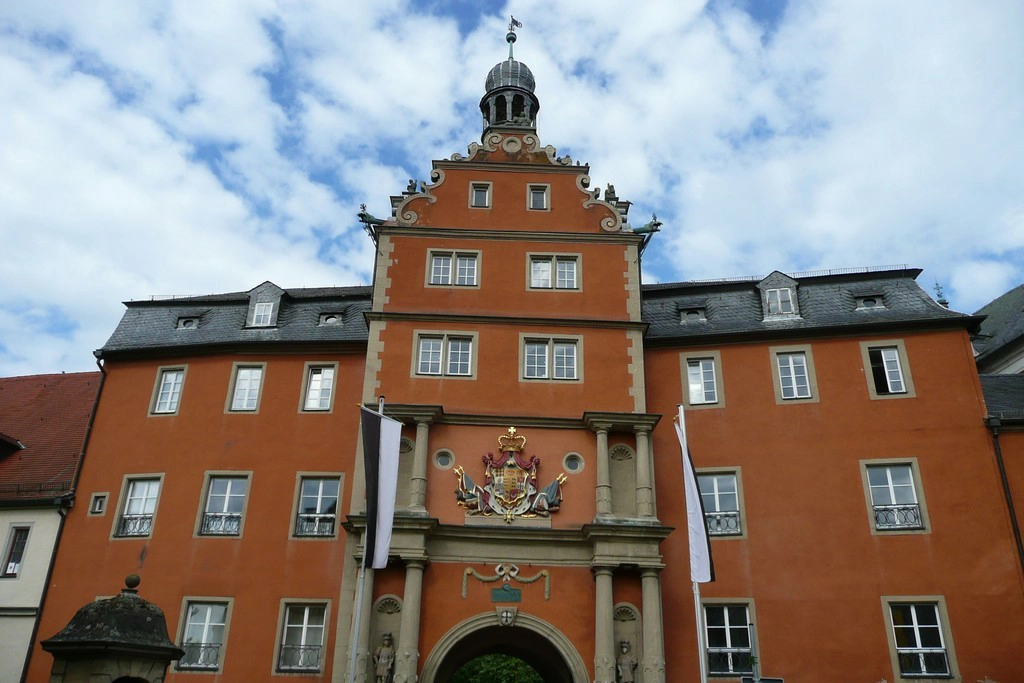
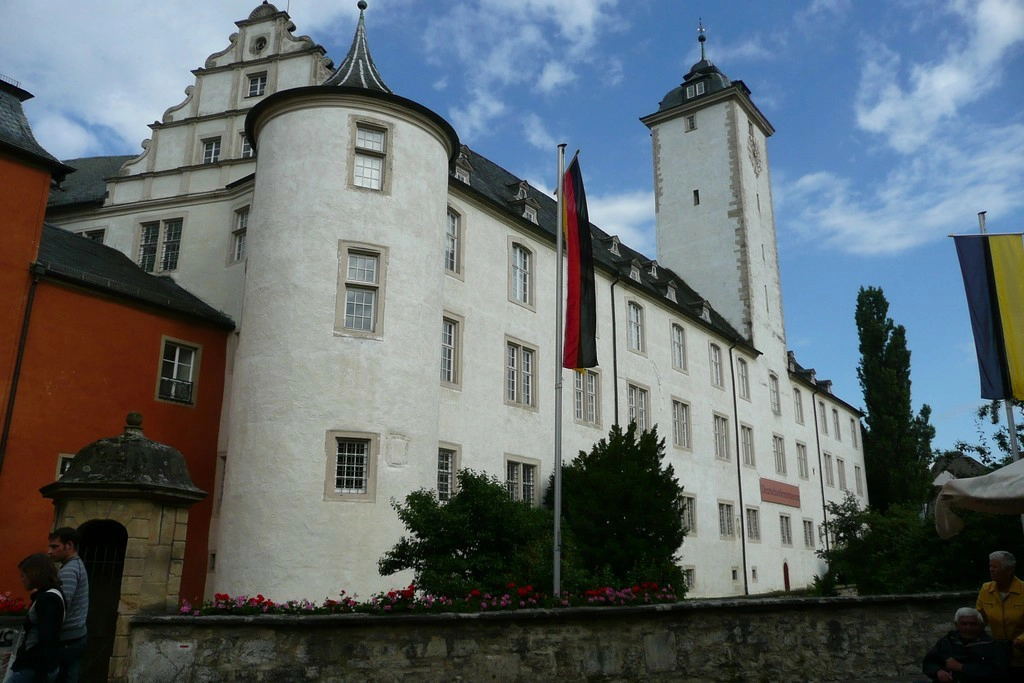
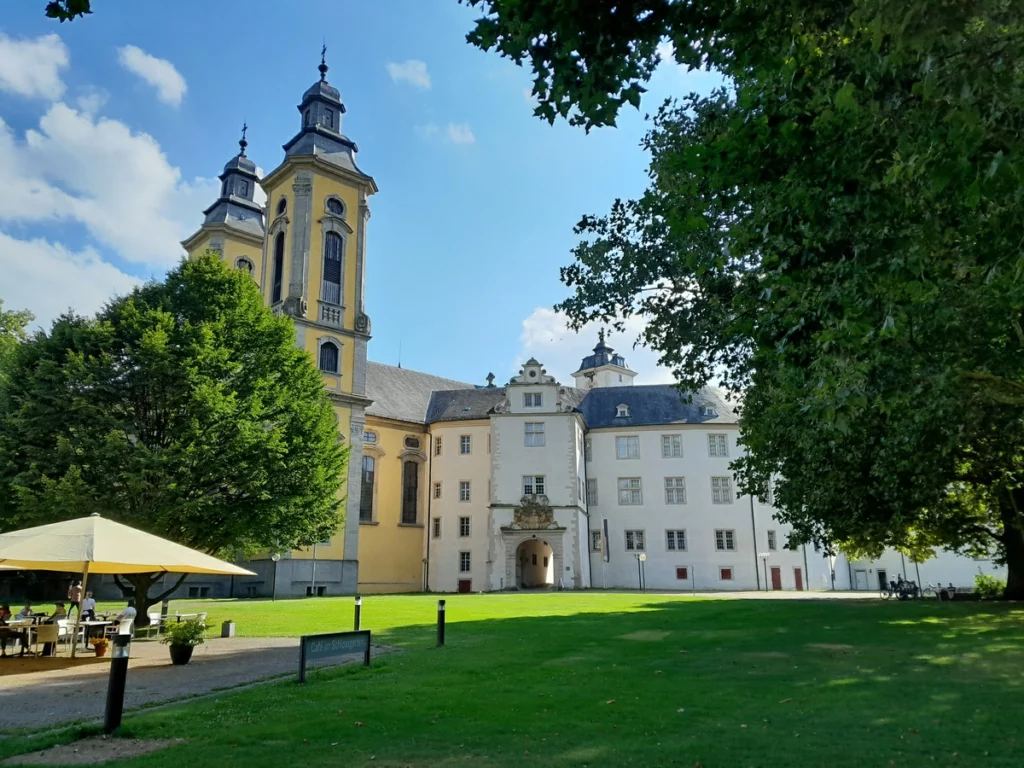
But the city deserves a visit thanks to the excellent wild park, which is located on the mountain above the city (Wildpark, Link, in winter only on weekends and holidays, you can get there from May to the end of October by bus, schedule on the website).
Northern animals are represented here: deer, roe deer (you can feed them), owls, storks, otters, bears, lynxes, wild cats, moose, birds of prey, some water birds, raccoon dogs, raccoons, martens, beavers, foxes, arctic foxes. It is better to explore the park along with an excursion, which are usually held twice a day, or go immediately after the excursion. Then you can see as many animals as possible. Lynx and wild cats are especially interesting to watch during the tour, as they are forced to jump after “prey”. In the middle of the day (and in the summer twice a day) there is a demonstration of useful animals: oxen pulling a heavy load, a dog herding sheep, etc. Unfortunately, for a family with several children, the park costs now too much, since they do not have a family ticket.
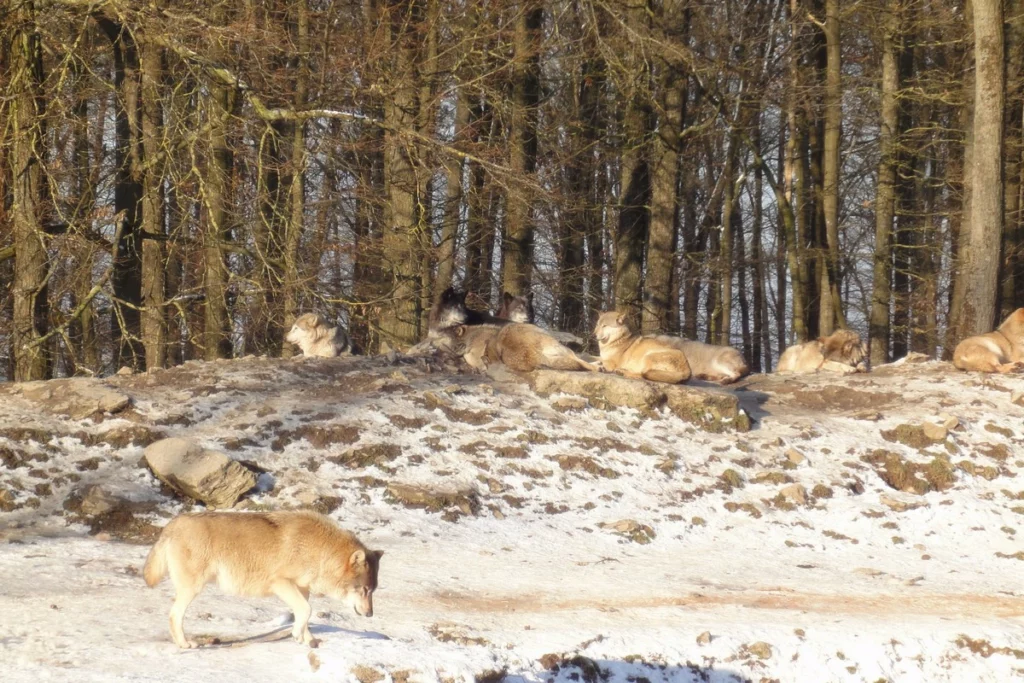
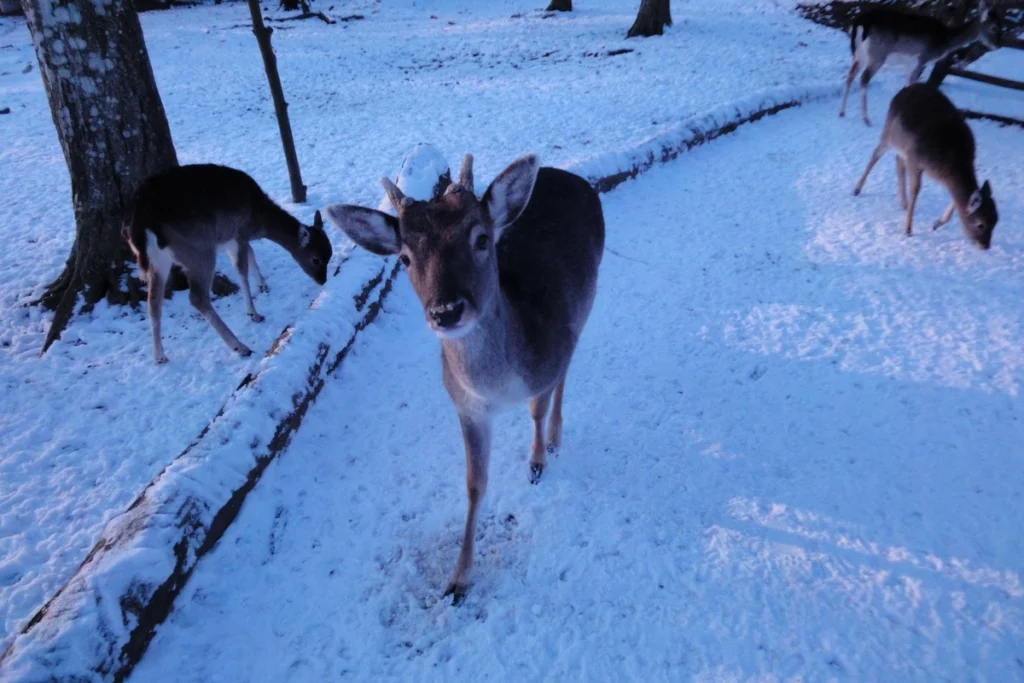
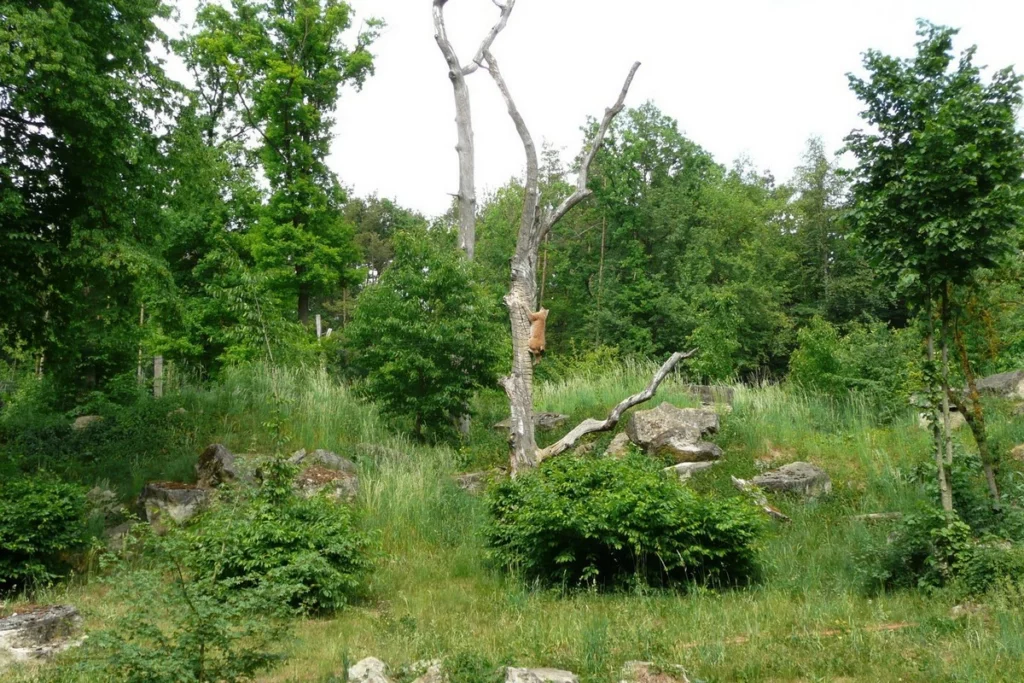
Let’s add to the list an expensive thermal pool (it’s not for nothing that the city’s name has the word “Bad”, Link) and Matthias Grünewald’s painting Stuppacher Madonna (early 16th century, Link), which is located in a church in a neighboring village.
2. Stalactite cave near Eberstadt (Eberstadter Tropfsteinhöhle)
The cave turned out to be much better than expected and really stalactitic: I thought there would be several small stalactites in the dozen empty halls, which they were very proud of. However, there are a couple of very impressive halls here, the rest are of a good average level. The most interesting thing is located almost at the very end of the route – a hall with a huge stalagmite “Wedding Cake”. Photos can be seen in Google images.
Tours are conducted in German; you can ask for a printout in English.
Link
It is better to arrive not exactly at the beginning of the excursion, but at least 10 minutes in advance; the ticket offices are located near the parking lot; you still need to walk a little further to the cave.
Public transport: train + bus, see options on the website.
During the winter, the cave is only open on weekends and holidays, with three tours in the afternoon. The excursion lasts about 50 minutes, the route is a dead end, so you need to return back along the same road, which allows you to launch only one group at a time. Photography is prohibited.
Nearby is the town of Osterburken, in the vicinity of which you can visit the park of historical reconstructions on the theme of the Middle Ages, Adventon. Medieval festivals are regularly held in the park. Link
3. Walldürn
Old town and the pilgrimage basilica of St. George, which has the special status of a “minor basilica”. The pilgrimage began after a miracle in 1330, when an image of the crucified Christ appeared on the fabric instead of spilled wine. Now up to 100 thousand people take part in the pilgrimage and festival. Celebrations take place in late May – June (Corpus Christi day).
Above Walldurn, on a short route to the Main, is the open-air museum in Gottersdorf (Link). The museum is small, but you can easily spend a couple of hours on it. Old houses from the Odenwald are collected here, and since the region is not rich, the houses are mostly very cramped and poor – which is rather rare, since such museums often collect houses of wealthier peasants, they are more well-kept and better preserved. A picturesque serpentine road descends to Miltenberg.

Maina valley from serpentine
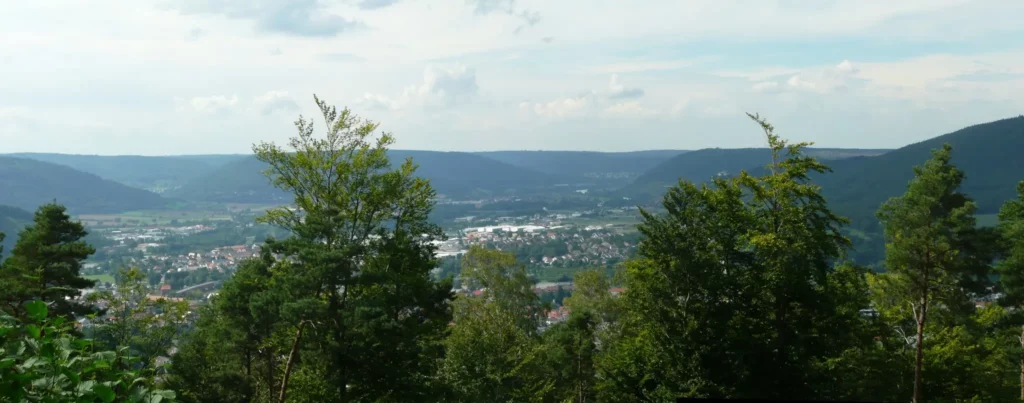
4. Amorbach
Amorbach is a small town in a valley between gorges. The local attraction is a large Baroque monastery and a park attached to it. The princely church houses the largest baroque organ in Europe. There is also one unusual museum: a collection of over 2,500 teapots along with Pepsi-Cola promotional items, dolls and teddy bears in a large greenhouse.
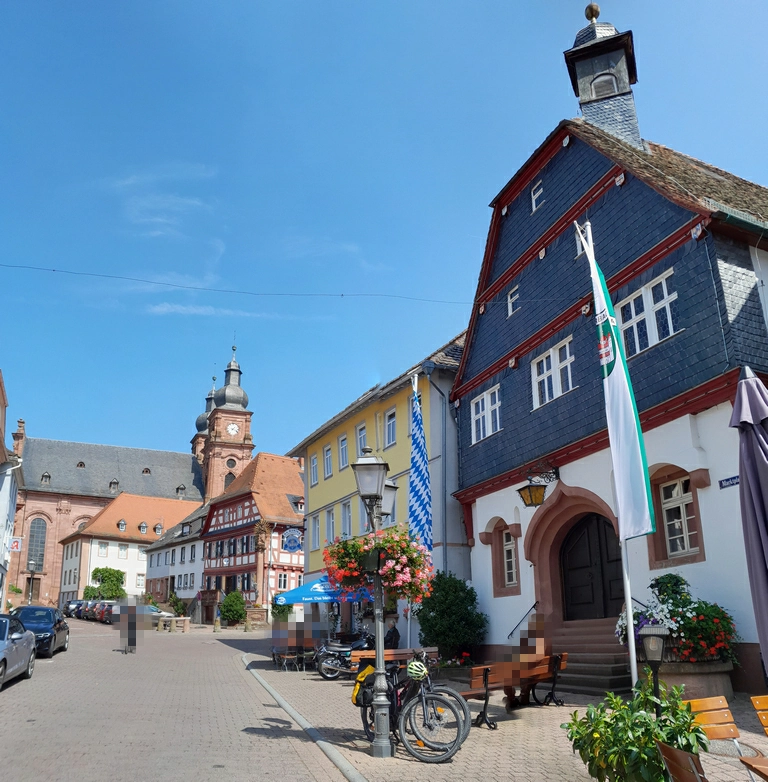
5. Michelstadt and Erbach
The two cities are located very close to each other.
In Erbach there is a palace with an interesting collection (antique sculpture, ivory figurines, armor, a knight’s hall, porcelain). People are allowed into the palace only with a scheduled tour (quite rare, see in advance). We didn’t go because it lasts almost an hour and a half, which is too tiring with children (already checked), but from the photographs it should be quite interesting. In addition, there is the German Ivory Museum, where you can see figurines from different continents, as well as a carver at work.
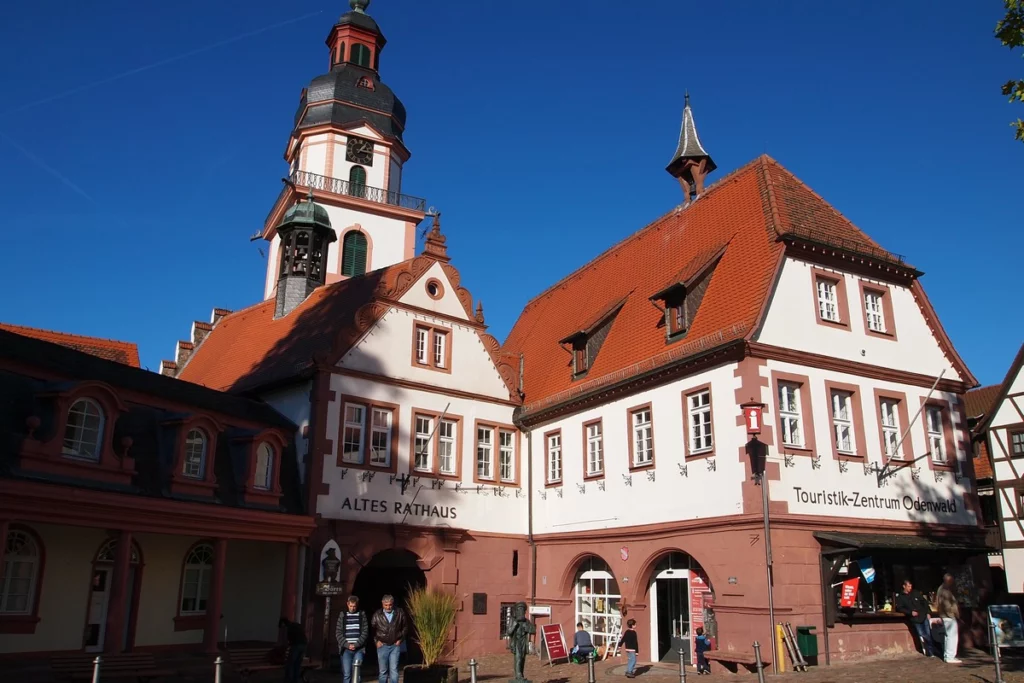
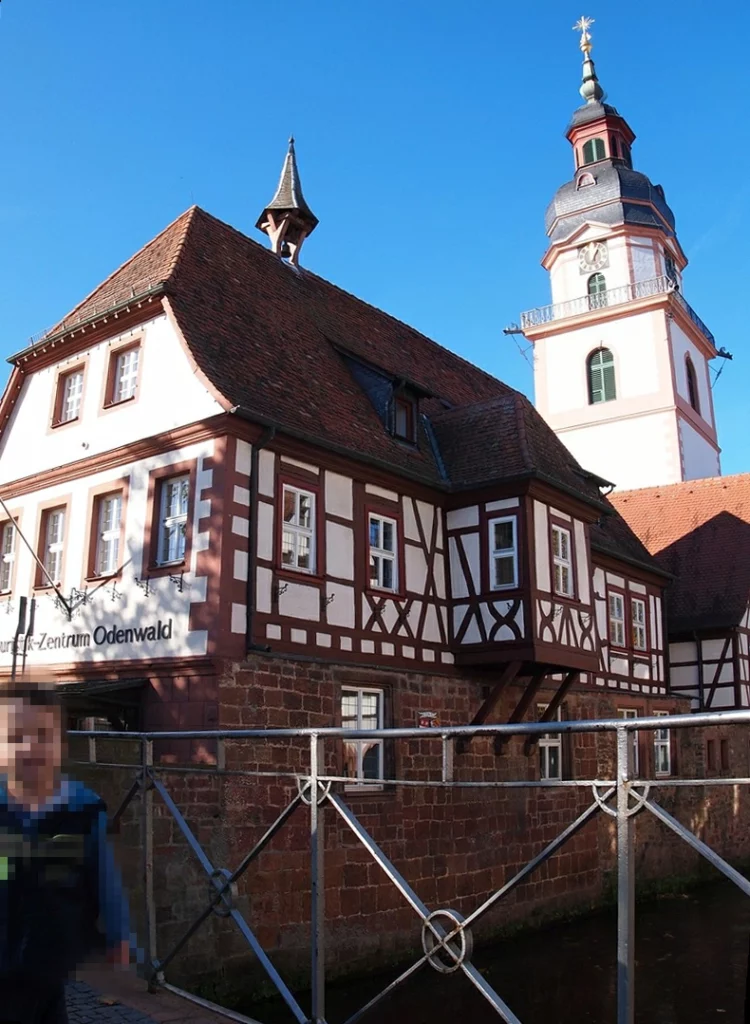
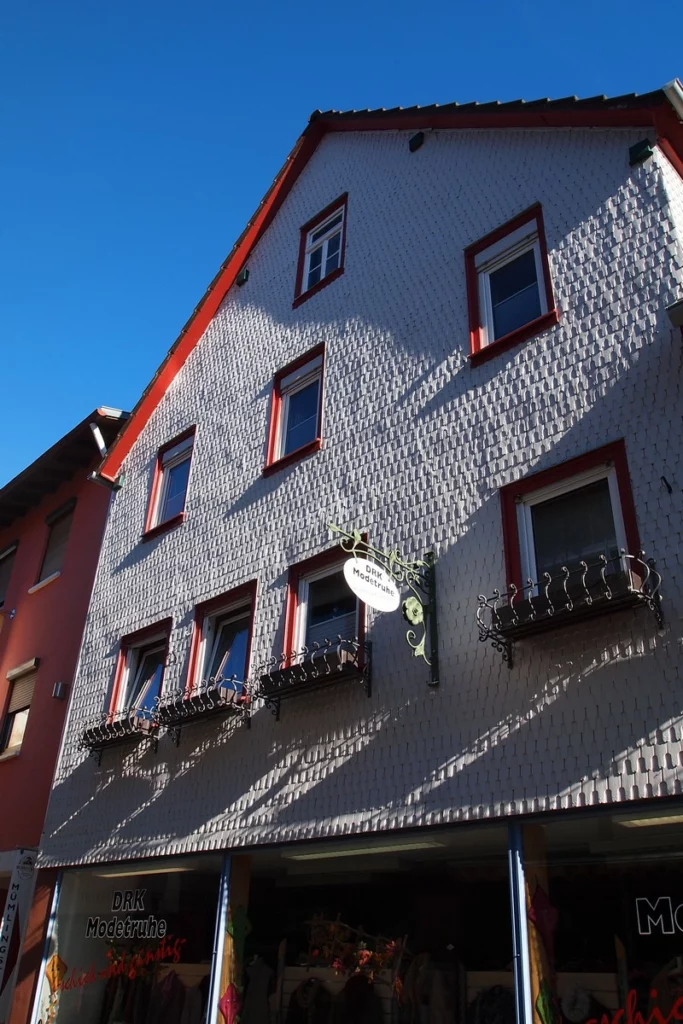
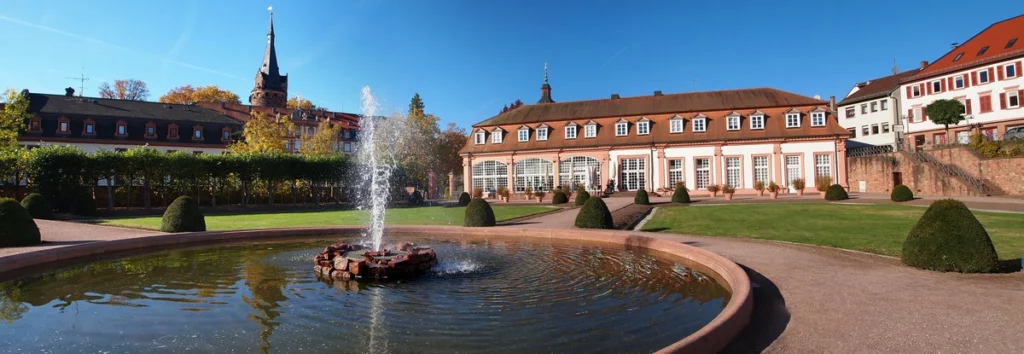
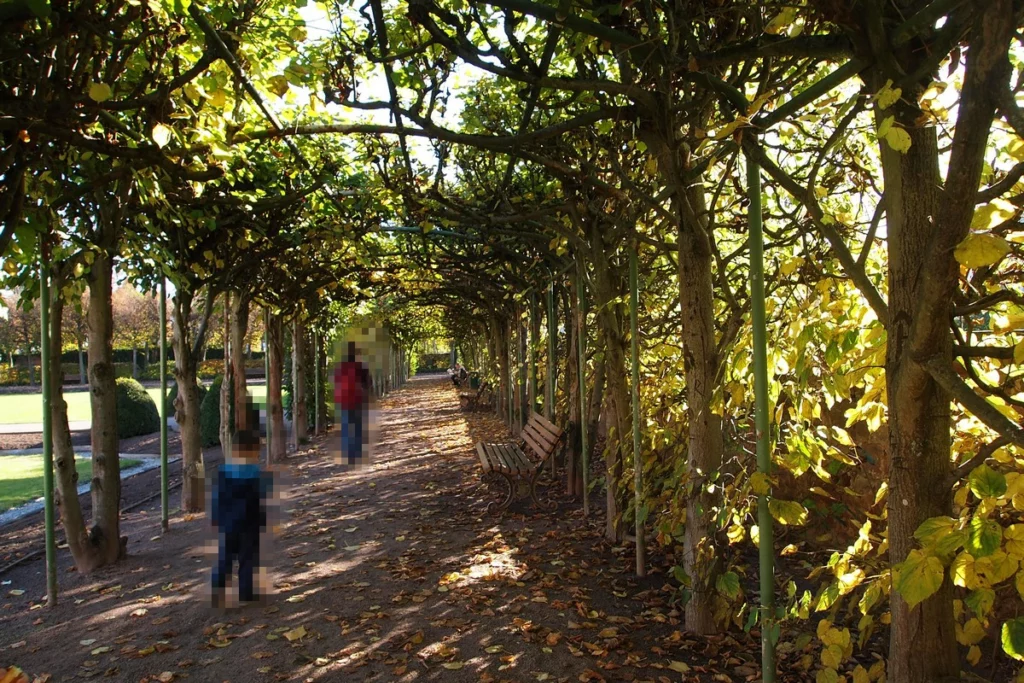
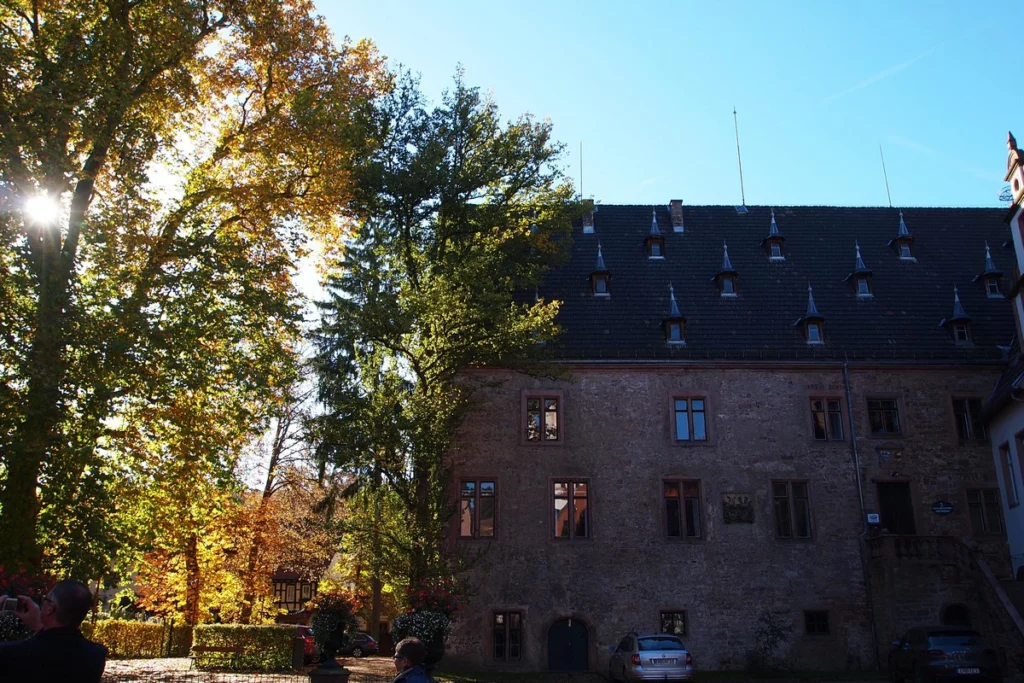

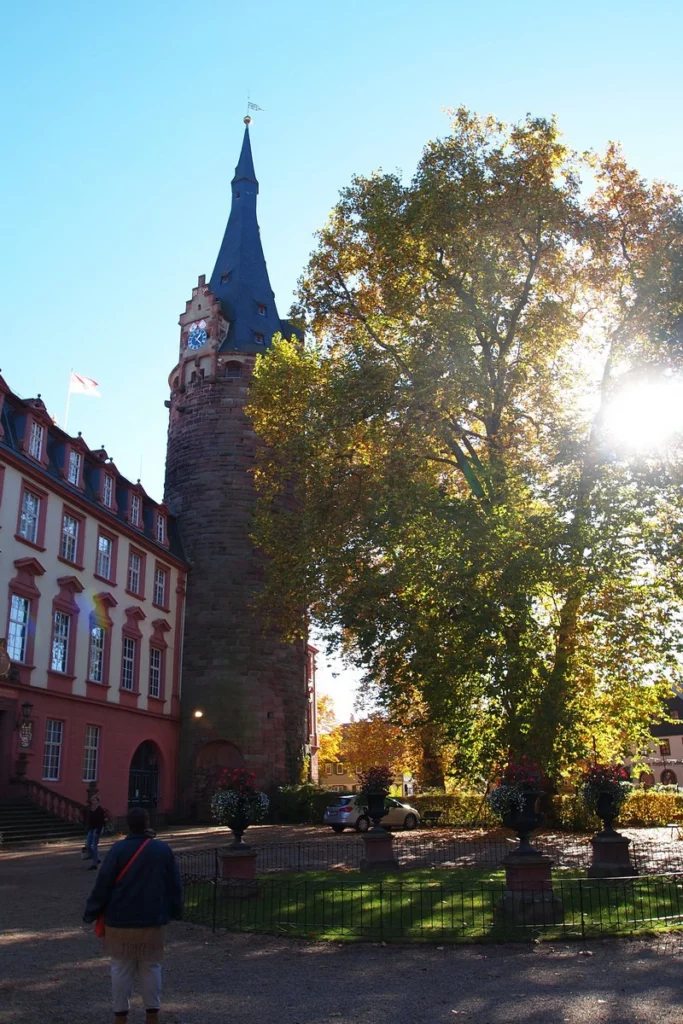
Michelstadt has a nice old half-timbered center with a partially preserved city wall. Across the river (20-30 minutes on foot) there is an old castle (13th century, view only from the outside) and a basilica from the 9th century. There is also an Odenwald Museum, a motorcycle museum and a private ivory figurines museum.
The town hall from 1484.
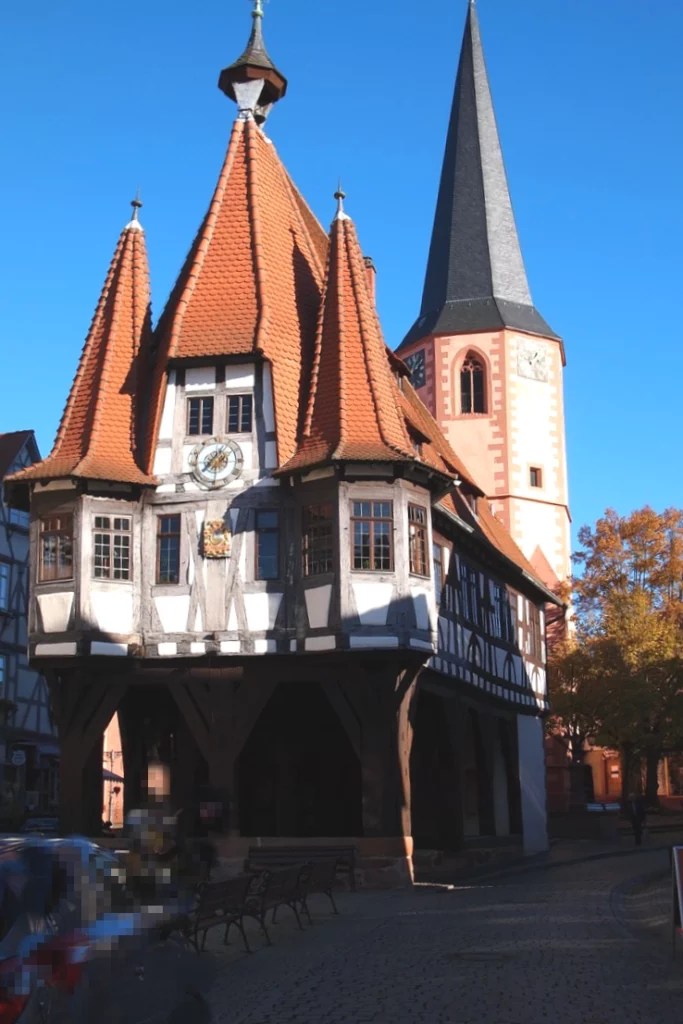
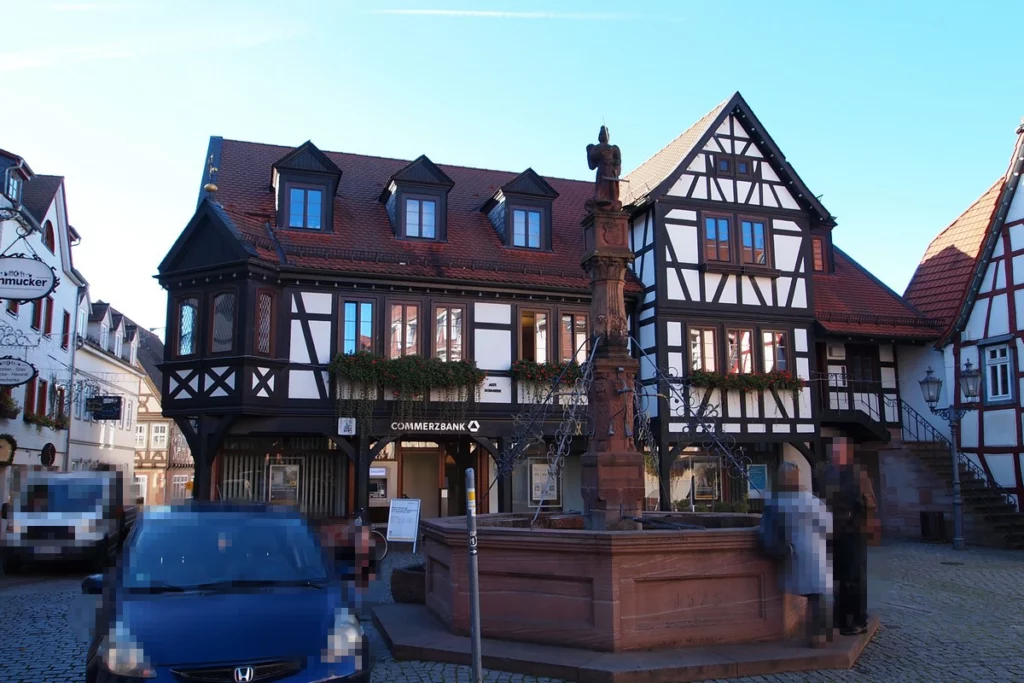


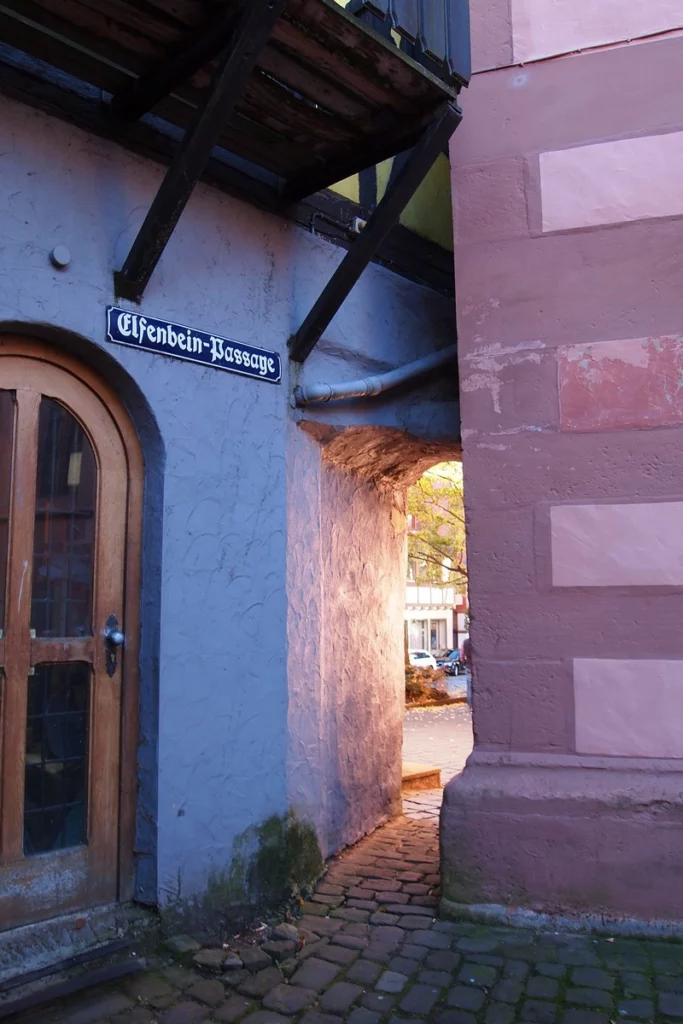
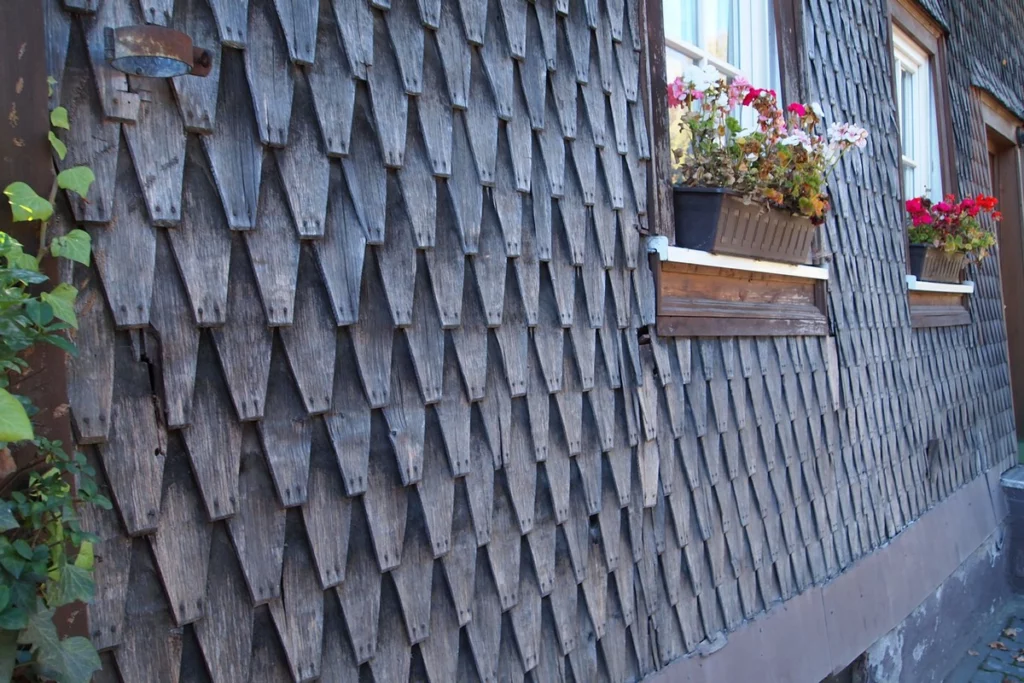
Fürstenau castle
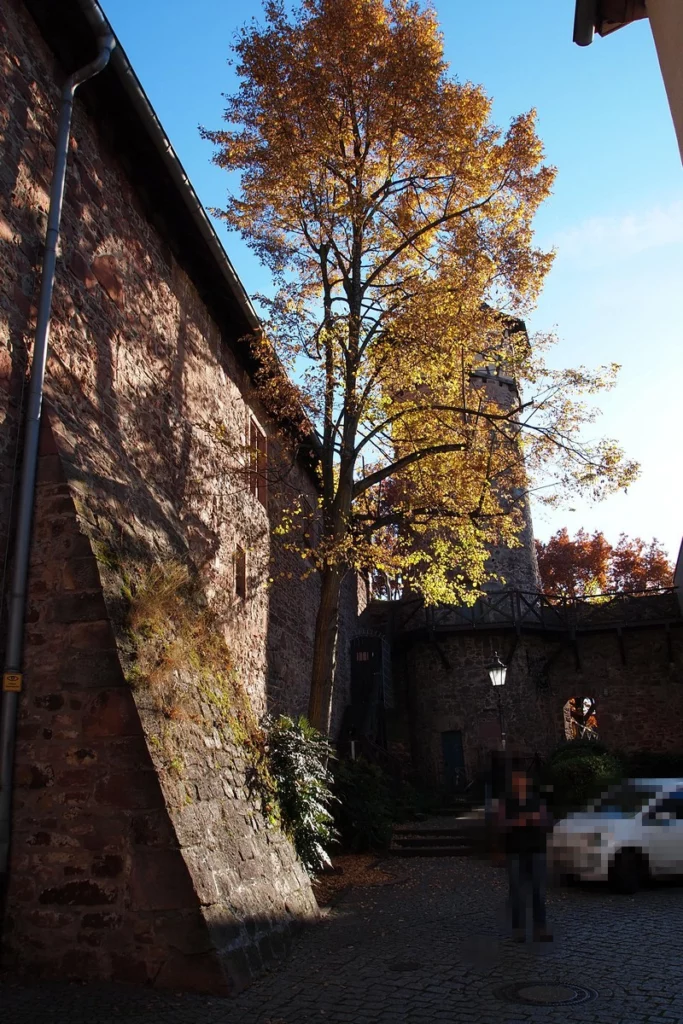
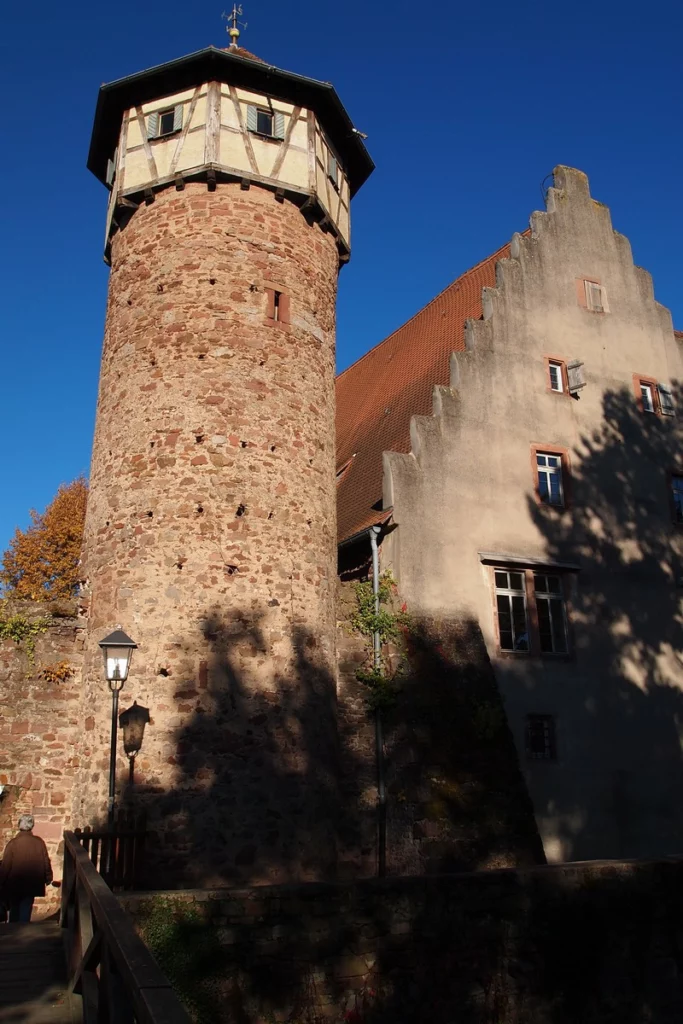

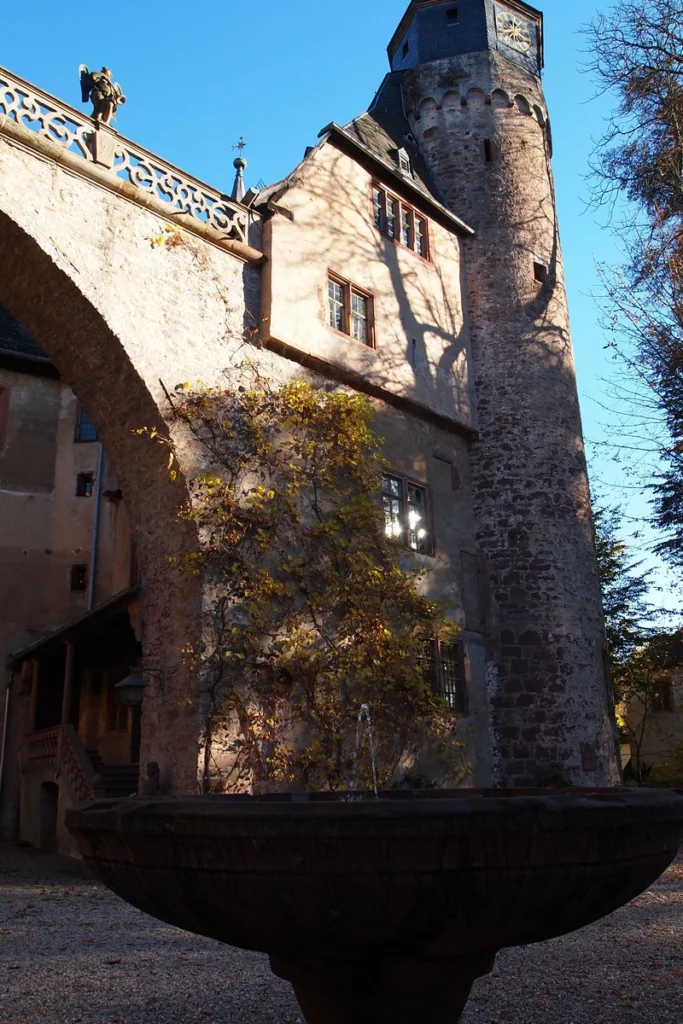

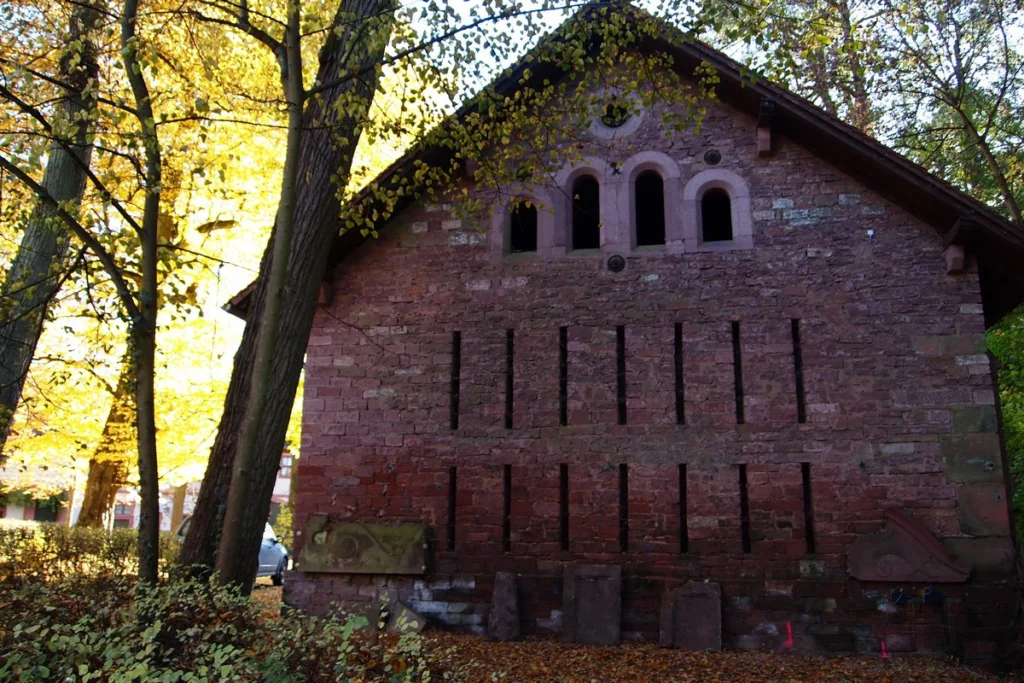
Reservoir on the way.

Follow me
6-7. Bergstrasse
Bergstrasse is a tourist route (car, bicycle or train) along the Rhine Valley, but on the very slopes of the Odenwald. The route is interesting for its old towns, ruins of fortresses on the slopes, vineyards, natural attractions and museums. There is even one place included in the UNESCO list.
More about Bergstrasse: “Mountain road” Bergstrasse. From Darmstadt to Heidelberg

8. Weinheim
Weinheim is also on the Bergstraße route, but I’ll highlight it separately because it’s worth a visit even if you don’t want to follow the entire route.
A picturesque old town, two castles on the hills, a very beautiful garden.
Thermal pool Miramar
You can get there by train and tram from Heidelberg or Mannheim.
More about: Weinheim Old town
Birkenau – village with a collection of more than 100 sun hours.
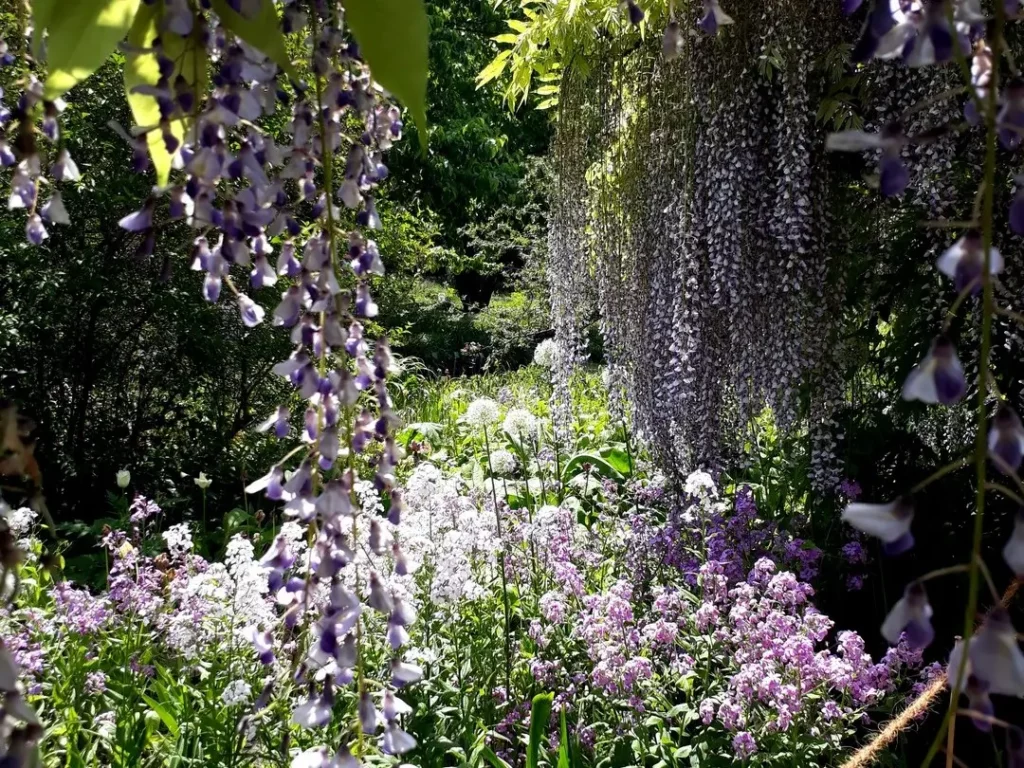
9. Fürth
A couple of things to do around the city of Fürth:
– Odenwald model railway Link
– mountain animal zoo Link
10. Wald-Michelbach
Entertainment park: coaster, rope park, wooden marble run and playground. Link
11. Speyer
Old town, imperial cathedral
Technik museum Link
Sealife Link
thermal pool
rope park

12. Schwetzingen
Park with summer residence and Rococo theater. Link
Schwetzingen. Cherry blossom garden
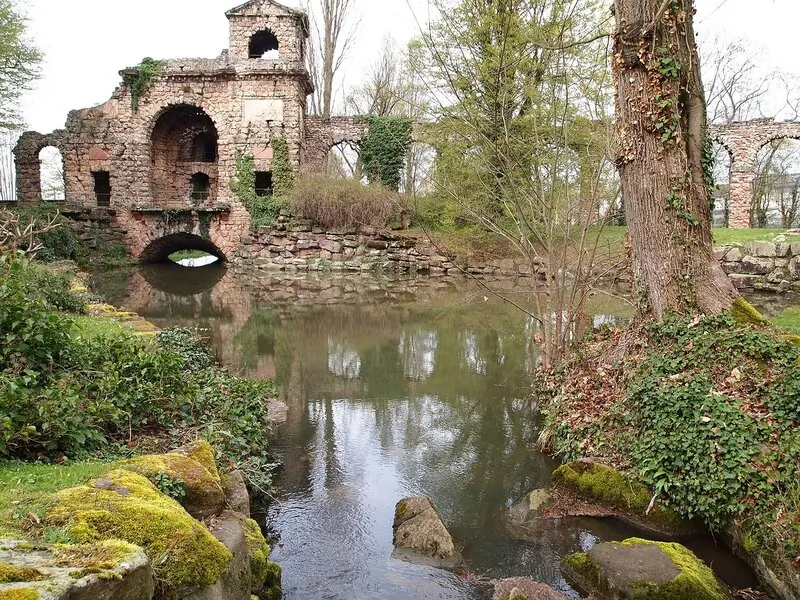
13. Heidelberg
Old town, castle. Link
Funicular Link
Museum of the student jail (during the high season it is better to book in advance) Link
Museum of the region – Kurpfälzisches Museum Link
Zoo Link
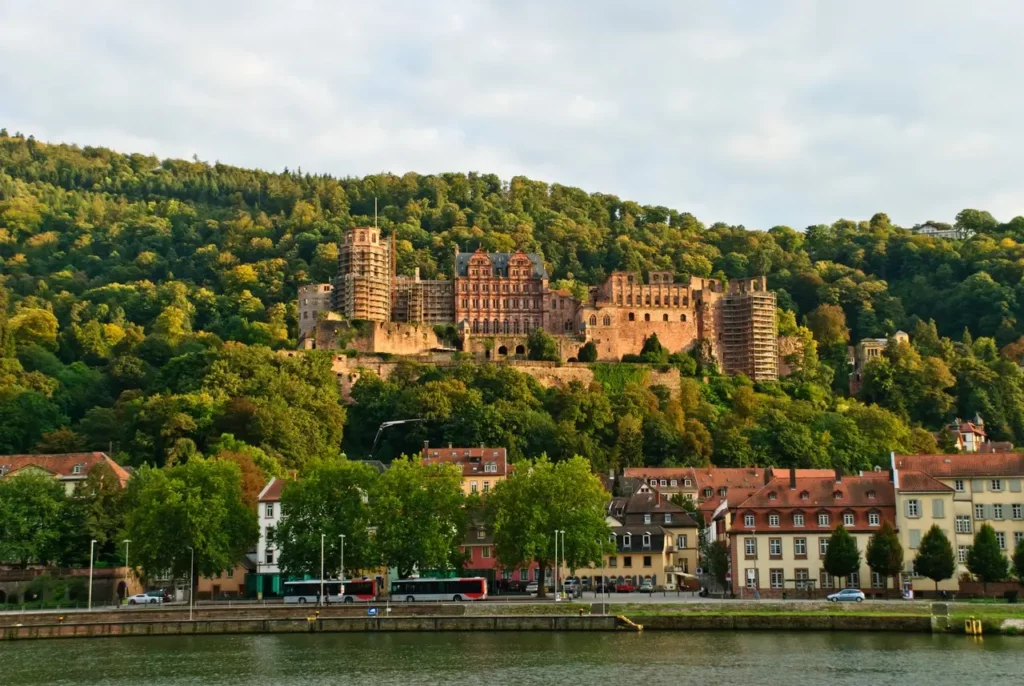
14. Ladenburg and Schriesheim
Back on the Bergstrasse route. Two more old towns and a very good Benz museum.
More about Bergstrasse: “Mountain road” Bergstrasse. From Darmstadt to Heidelberg

15, 16. Neckar valley and Castle road
Part 1 Castle Road (Burgenstrasse). 1. Neckar cycle route Mannheim – Eberbach.
Part 2 Castle Road. 2. Neckar valley cycle route. From Zwingenberg to Bad Wimpfen
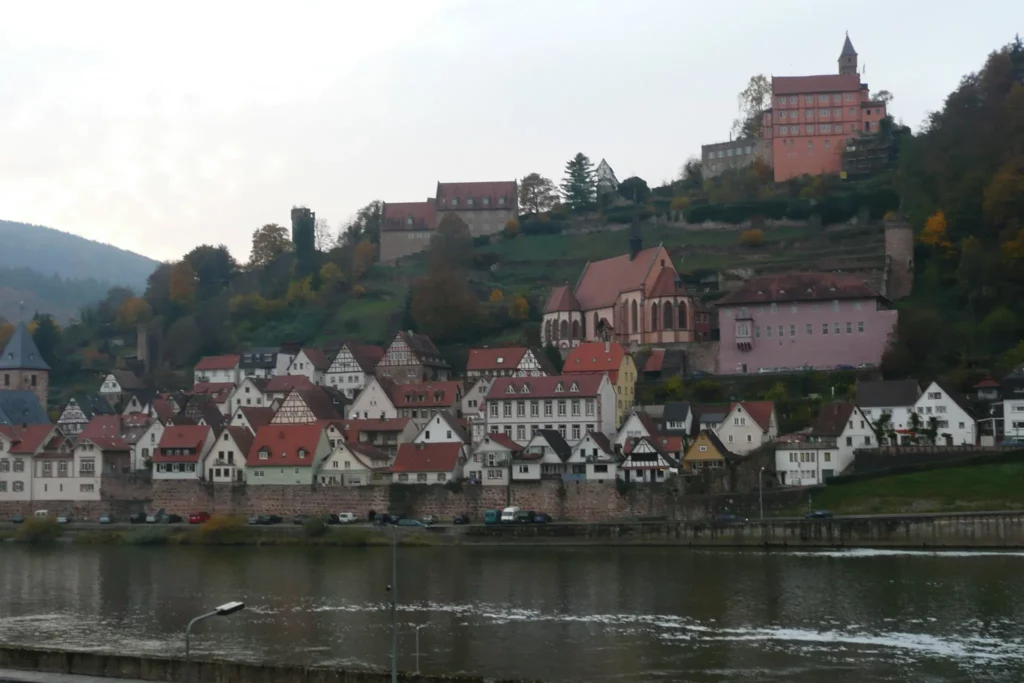
17. Sinsheim and Schwarzach zoo
Sinsheim:
second site of the technik museum Link
thermal pool (for children over 3 years old only on Saturdays),
climate museum (new and not yet clear if it’s worth it) Link
large all generation playground in the city center.
Technik museum Sinsheim. IMAX cinema
Zoo Schwarzach. The small but pleasant zoo is located away from popular routes and is visited mainly by residents of the near and distant surroundings (Link, train to Aglasterhausen, then bus). The most popular animal in the zoo is undoubtedly the small steam locomotive at the entrance, for which you have to pay separately. The rest of the animals are mainly birds and ungulates: a large enclosure for deer, zebra, goats.
18. Jagst and Kocher route
One of the popular routes among cyclists and motorcyclists is the route along two rivers. At one time, narrow-gauge railways ran along both rivers, but over time they were dismantled and paved for bicycle roads. There is nothing stunning here, but there are cute small half-timbered towns and pleasant rural landscapes.

Along Jagst valley to the north of A6, Jagsthausen is most known – a small town with a couple of small castles and a very popular summer theater. The Rotes Schloss restaurant-castle is also known.
The most famous of the local nobles was Götz von Berlichingen. Knight Götz lived in the 15th and 16th centuries, participated in various battles, lost his arm, which he replaced with an iron prosthesis, participated in the peasant war, was imprisoned in the Heilbronn tower and lived a surprisingly long life. This character, and especially his iron hand, periodically appears in various literary works, and Goethe honored him with an entire play. The modern von Berlichingen of Jagsthausen are descendants of his brother.
The Schöntal monastery is located very close to Jagsthausen. This monastery was founded back in the 12th century, during its heyday in the 17th and 18th centuries it was rebuilt in Baroque style. Now the monastery is not activ, it operates a hotel and hosts events. The church of the former monastery can be visited. There is a café-confectionery on site.


At the Kocher north of the A6, Künzelsau can be interesting: Museum Würth (contemporary art), Museum for the Future at the Mustang clothing factory, funicular.
Maps nearby:
North: Spessart. Mespelbrunn castle
East: Romantic Franconia
From Ulm to Ellwangen. Albtrauf and Bavarian Swabia
North-West: Attractions around Frankfurt am Main, along the Rhine to Koblenz
Castles on the Middle Rhine on the map. 1. From Rüdesheim to Bacharach
South: Castle Road (Burgenstrasse). 1. Neckar cycle route Mannheim – Eberbach
Castle Road. 2. Neckar valley cycle route. From Zwingenberg to Bad Wimpfen
Castle Road. 3. From Sinsheim to Rothenburg ob der Tauber
90+ parks and gardens in Germany on the map
Do you enjoy the site without cookies? This means that I work for you at my own expense.
Perhaps you would like to support my work here.
Or change your cookie settings here. I don’t use personalized ads

